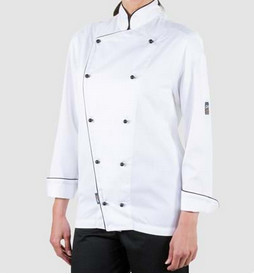Text
Fun Facts About Chef Hats
Chef hats have been around for centuries; in fact, they first started to appear in Assyria about 500 BC At that stage, the Assyrian Empire, which was one of the most powerful empires in history was having problems with cooks killing off the royalty by poisoning their food, whether or not for their own advantage or on behalf of another who sort power, it is unclear. The rulers decided because this was such a problem they would elevate the status of their head cooks so they became known as kitchen chiefs (nowadays chef’s) and were presented with a unique style of headgear that was similar to a kings crown to help distinguish them from other kitchen workers.
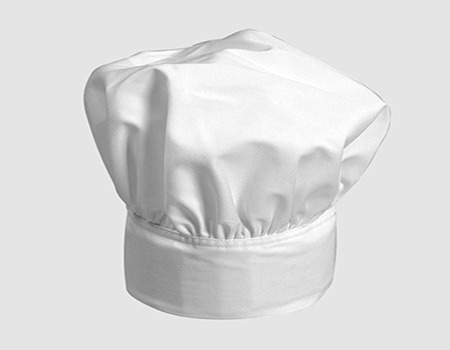
At this time most people were illiterate and the only ones who could read were the professionals such as engineers chefs monks and nobles. This cause Head Cooks (kitchen Chiefs) to be considered intellectuals who were at that time were often persecuted by the people.
For their own safety when not working head cooks (kitchen chiefs) found refuge in the Greek Orthodox Church. They wore disguises of monks robes and caps, which eventually evolved into a very early version of the traditional chef’s uniform.
Toque Blanche
The modern day white chef’s hat or “toque Blanche” which is the most commonly seen chef’s hat in Melbourne is thought to have originated from the days of King Henry the VIII. Apparently, he was annoyed with a hair in his food so ordered the beheading of the cook responsible. Since then cooks many cooks prefer to wear a hat to avoid this issue and being beheaded. This hat eventually became the well known chef hat of today.
The Beret and Skull Caps
The exact way the Beret and skull caps same about is not known, although there are some records that tell of cooks in English monasteries during the 17th century liked wearing the old discarded black skull caps of the monks
During the 18th century, it was uncommon for cooks to wear hats or chef uniforms, those that are known were shapeless white caps.
Most people agree that the modern black skull hat seen in many Australian kitchens became popular in the mid 19th century, when Alexis Soyer started wearing one while he was the Maitre Chef des Cuisines of the very famous and renowned Reform Club in London.
Soyer, worked with Florence Nightingale during the Crimea war to improve the standard of food supplied to soldiers in the military hospitals and his familiar black skull cap known as the “Soyer Boiler” was then adopted my cooks in the armed services right up until the 1960’s.
In England, at that time the Maitre Chef des Cuisine or what is now called the Executive Chef were the only ones permitted to wear the black skullcap or the similar beret. At that time females were prohibited from taking a chef apprenticeship a rule that fortunately has long been stopped.
The most common chef’s hat in Melbourne, the “toque Blanche” can trace its origins back to the cooks of the Assyria period about 500BC and the monks of the Greek Orthodox Church. The Beane, the beret and skill cap were first made popular in the 1804’s in the armed services hospitals.
0 notes
Text
6 Habits Of A Successful Hospitality Business
Hospitality is a very broad term and covers many types of businesses, but they all have one thing in common, they cater to people wants and needs. The degree of success you have will largely depend on how well you fill the desires of your customers.
The following six habits of a successful hospitality business can apply to almost any type of business:
Hospitality is about people and communication, it’s a team effort where a successful establishment works together as a team that is open and approachable at all levels so the guests feel more comfortable and the whole atmosphere is more convivial. The more enjoyable and the greater the value someone gets in a place the more likely they are to return and tell others.
Being an ever changing area, it is important for those in the hospitality industry to have a habit of keeping up with the latest and popular trends and changes in the market to increase the level of enjoyment they provide to their customers. Everything from colour of the menu to the hospitality aprons worn can affect the tone of an establishment.
Getting to know your customers, their likes and dislikes, noting the anniversaries of your regular customers and send a friendly email or post on Facebook gives a personal touch. A few words that show that you have taken the time to acknowledge them is a great way to embed yourself in the local community where most of your customers come from.
Recognise the role technology plays in your business and keep up with it. Social media is a powerful tool and becoming more important with local SEO as the vast majority of the customer base is constantly connected. This gives you the knowledge about what’s happening around you allowing the chance to interact and have your business as a recognised part of the community.
Pay attention to details having a clean well appointed and modern premises while making sure every guest the best possible experience it the key to success. Diplomacy and quick at problem solving ensuring your customers are happy is by far the best advertising possible. Having an empathetic attitude and showing a genuine effort to fix things is half the battle in solving most hospitality problems along with the ability to stay calm in the face of emergencies and respond quickly. Even if it means donning a hospitality apron and getting stuck in.
Always making the best from your education and by having the right training qualifications and skills to do the job. Knowing that you can always improve and so keep learning and attending conferences, so you are always ahead of new developments in the industry while you keep an open mind.
Help and acknowledge your fellow workers, employees and even the competition as the successes of your business also depends on the success of everyone involved in it and the community you serve.
Success in hospitality depends on a habit of ensuring that every individual involved from the owner, the front staff, back staff, all the suppliers, the head chef to the janitor are all working together with open communication to ensure all customers get the best value and enjoyment possible.
#Uniforms#Chef Uniforms#Hospitality Industry#hospitality uniforms australia#Hopitality#Hopitality aprons#aprons#small business
0 notes
Text
Top Interview Questions and Answers for Barista
Being a barista is a prestigious and desirable position in any café and with the large amount of competition from other candidates who are hoping to win this job, you need to be well versed in all aspects of coffee making.

During your interview when you can expect to be asked almost anything, from what do you know about growing, harvesting, roasting and brewing specialty coffees, what type of barista apron you wear, to, how would you handle a customer who was upset over a mistake you or one of your colleagues had just made when you are in the middle of rush hour and have many other customers waiting as well as watching your every move.
These are the types of questions you can expect and some suitable answers:
Q. How would you cope with an unruly, upset, complaining Customer?
I have had a little experience with difficult customers and found the best way to proceed is a non-confrontational method and simply apologize to them regardless whether you consider they are right or wrong. It is not in the interests of the café or other customers to have a scene. Smooth over the incident in a professional manner and offer a new beverage or other item of their choice and thank them for being so understanding over the mistake. The idea would be to turn it into a positive incident where they will want to return and recommend the café to others.
Q. How would you remain focused throughout your shift while doing repetitive tasks, sometimes for long hours?
I have found the best way is to try and engage the customers in an interesting conversation where appropriate, such as sharing my knowledge about coffee growing, roasting and the different blends. During quiet spells, I find this is an excellent time to do tasks such as checking the stock and refilling the shelves as well as ensuring the whole area is spotlessly clean and tidy.
Q. Are you available to work early morning and late night shifts, what about weekends and holiday times?
I am more than willing to work anytime that I am needed, and can make sure I am available at short notice should the need arise.
Q. How would you handle the high stress of our rush hours?
I would ensure my colleagues and I were fully prepared and well versed in the company policies regarding service and customer satisfaction.
Q. What is your favorite coffee?
I enjoy my coffee black so I can savor the full flavor of different coffee beans and special roasts.
Q. What extra skills do you have for this job?
I have great communication skills as well as being customer focused and well versed in food safety and hygiene procedures.
Q. What kind of Apron do you prefer?
I prefer a specially designed barista apron because they are stylish, comfortable and practical.
Working as a barista requires not only coffee making skills, but also good customer service skills and an ability to think laterally under pressure. Your interviewer will ask you questions about your suitability for working in their establishment, ascertain your experience level as well as work history and character.
0 notes
Text
Do you know about these 8 Different types of Chef Uniforms
Modern chef uniforms come in a variety of colours and styles, whether you’re interested in simplicity, uniforms with extra comfort features. There is a vast array of new styles such as jackets with cool vent technology or maybe you’re more of the perfectionist in the kitchen who’s going for the executive model of chef uniform that’s setting the kitchen fashion in your area.

Chef uniforms a now made using different high quality, durable materials that are easier to clean and look good throughout your shift, whether you prefer the original white classic or vintage styles or colours that match your particular branding and décor of your workplace there are chef uniforms available to suit that are functional, practical and versatile
Jackets and Shirts
Take your pick from a lineup of double breasted jackets in a variety of colours from classic white to two-tone and contrasting piping that can be embroidered to suit with your company logo or your name
Jackets now come with double zips that start at the top and bottom, or snap closures to make it easier to get on and off
An assortment of fully functional unisex Sushi Chef Jackets that can wrap from Snap Closure either side are now available. These come in a whole range of patterns from plain to floral, in both padded styles for protection and kimono style for coolness. You can have long or short sleeves depending on your preference
Lots of kitchens have now opted for using tailored fit chef shirts which come in different sleeve lengths with or without collars and cuffs and give the kitchen a modern and professional look
Chef “Tee “Shirts are also popular these come with pockets and even hoodies in a range of colours
Chef Pants
The old style checked chef pants are still in fashion, but there are also new styles available all made with washable and durable materials
Baggy style pants with a variety of colours and interesting designs are made with comfort in mind
Stretchy type Jogger chef pants are very common now as they are inexpensive and easy to launder
Cargo type chef pantsare great for those who like to keep thing hand in sealable pockets while on the go
The materials like denim and canvas have returned in fashion styles for the kitchen
Chef Hats
There is a whole range of acceptable headgear now available
Adjustable band Chefs hats in a variety of colours
Pillbox chef hat
Chef Beret
Baseball caps shorty chef caps, Velocity Visors Coolmax Chef Visor
Headwrap scarf hats
Wide stretch headbands
Chef Shoes
A chef uniform is not complete without the right super comfortable shoes and durable anti slip shoes
Clogs
Slip on Leather
Oxford laceups with or without steel caps
Aprons
Aprons are very functional but can also be a fashion statement as can be seen in the lineup of available models
The Outback
The Jackson Denim
The Archie Denim
The London
The Chloe
As can be seen by the impressive lineup of items to complete the modern chef uniforms there are now more than 8 stylish types of chef uniforms available at your local chef uniforms supply shop around Australia
1 note
·
View note
Text
Top Tips & Trends in Chef Uniforms
Chef uniforms have finally, after many years of being basically the same in establishments everywhere started to reflect the originality, tastes and personalities of the wearer’s management and owners of many different styles of restaurants found all around the country. It is now becoming uncommon to find chefs who prefer the traditional torque blanche (white chef’s hat), they now prefer caps or scarves which do the same job of providing personal hygiene around food areas.
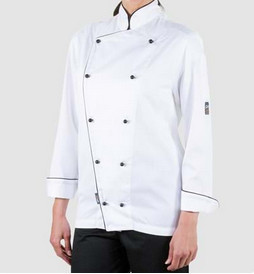
The timeless traditional white double breasted jacket is still the most common choice found in kitchens by chefs of all ages. One of the reasons it remains popular is it’s much easier to clean, being able to handle bleach which would ruin coloured fabrics. Kitchen managers and restaurant owners like white because it gives the impression of cleanliness and professionalism. All other items of the chef uniform have undergone a transformation in this new world where almost anything goes.
New Look Chef Jackets
In some establishments, chefs are trading whites in a range of colours to suit the branding and decor of their workplaces to instantly update their look. Often different shades of charcoal, gray greens or even black are becoming popular, these colours help to mask the occasional spill or splatter marks that are inv1table in a busy kitchen.
The new designs of jacket come in different sleeve lengths full, three quarter, half and even short. Some styles have replaced with zippers instead of buttons, running from the top, bottom or both, giving a bit of flexibility to the wearer and making it much easier to put on and take them off. These modern styles also incorporate cool vents to make life in a hot kitchen easier. Useful pockets on the sleeves and sides have helped to transform even the classic white jackets.
Aprons
Aprons have come a long way recently with the use of different fabrics such as denim, canvas and a waxed finish to make them easy to clean. They are equipped with rings, grommets and pockets which make the practical and stylish while still allowing you to took clean and tidy during messy prep work
Chef Pants
Chef pants have also started to sport a variety of different colours and designs with the traditional check giving way, mainly to darker shades although most chefs prefer the baggy look for comfort
Chef Shoes
Having the proper comfortable Chef Shoes during the long working shifts in most kitchens have always been a major consideration and today many will prefer the chef clogs over any other type of footwear because of the comfort safety features they provide.
Many establishments like to have uniforms that look the part and help reinforce their brand credibility and show they are modern, innovative and progressive as well as providing a high standard of quality and service with an up-to-date cuisine.
1 note
·
View note
Text
Simple Tips That Will Make You An Exotic Barista
Coffee is one of the world’s favorite drinks, it is very similar to tea in that almost every country has a variety or local way they prefer their coffee grown, roasted, brewed and consumed.
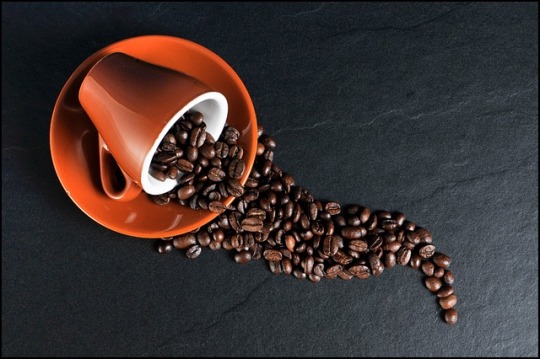
Many people in the western world are surprised to learn that coffee is not a standard flavor as coffee beans can vary considerably from different farms and different regions. Those who like to drink their coffee black will have more of an appreciation of this than those who like to use milk, cream and sweeteners.
Some basic coffee facts
Black Coffee contains virtually no calories.
Although call a coffee bean, coffee is not a bean or legume, it is a member of the Fabaceae family of trees. Coffee is made by roasting and grinding the.
Coffee reaches its peak flavor about 6 to 24 hours after being roasted then, after 6 days it begins to lose flavor as it oils oxidize and for best flavor should be consumed within a month of roasting.
Ground coffee is best used straight away or within 6 hours of grinding.
Store dried unroasted beans in brown paper bags so they can breathe in a dry cool place.
Roast the beans in the oven at 180C for 20 minutes to heat them, then finish them in a pan on a hot fire where they have to reach 475 to 500C at which stage they will crack and then they should be removed and allowed to cool naturally, The longer they take to cool because of their high oil content the more they cook and the darker the roast.
Store freshly roasted beans in an air thigh jar with but do not seal for 2 hours as they will give off CO2, then seal and grind just before using.
If you cannot get fresh or dried beans buy freshly roasted un-ground beans.
When grinding beans it is best to use a manual hand grinder or if you use a lot of coffee use an automatic electric burr grinder costing about $150. Blade grinders give an inconsistent grind size so can cause over extraction.
Making Your Coffee
Measure your coffee by weight for best results. An ideal ratio is one part of coffee to twenty parts of water (1 to 20) 50ml of hot water to 7.5g of ground coffee.
The best water temperature is between 90C (195F) and 96C (205F) most coffee machines do not reach this temperature so do not properly brew the coffee, but do not heat over 97C as you can burn the coffee.
Make your coffee by pouring boiling water over it in a coffee pot and allow it to brew a few minutes.
It is best to use spring water, but not heavily mineralized water as the minerals will stop the coffee being extracted properly.
The best coffee is made “just how you like it” but if you are new to drinking black coffee, then a lot of experimentation is in order before you have experienced enough coffee to become a true Barista, but learning how is a very enjoyable pass time.
0 notes
Text
How To Choose What Type Of Colour Scheme For Your Uniform
Chef uniforms have traditionally been white with chefs wearing white hats, jackets, aprons and gray checked baggy pants. Many chefs still prefer to wear the traditional colours for several mainly practical reasons;
White although it stains easily it can also be bleached with little problem to remove stains, coloured cloth cannot be bleached as this would ruin the colour.
Often it is the chef’s responsibility to launder their own uniform so many chefs prefer the ease of looking after a white uniform, then if they feel the need for a touch of colour a different coloured apron or necktie can make the difference.
It has long been expected, especially in large kitchens that the wearing of white chef uniforms donates rank with the most senior staff traditionally wearing black pants and tall white hats.
White means clean, some suggest white shows up any stains or spills and that is the point, it shows that their meal was prepared in the cleanest environment possible.
White tends not to absorb heat so keeps the wearer cooler.
In many traditional, especially French type kitchens, all Chefs dress in white, prep cooks in gray or black and all extraneous kitchen staff wear blue. The head chef will often have decorative piping trim on the jacket, hat, and apron to show everyone who is in charge.
These early traditions have now been superseded in many kitchens that are open to the public opting for different colours to match the décor and branding of the establishment.
Often the kitchen staff will get together with management and develop a colour scheme that allows for chef uniforms to be in keeping with a restaurant’s atmosphere.
Front House, Back House
In the front of the house or restaurant where most of the staff interact with customers, it is normal for everyone to wear a similar colour uniform that matches the décor and restaurant theme to show a unified front.
At the back of the house (the working kitchen) often there is now a mixture of different styles. Some establishments require the entire staff to have a unified appearance. This makes a good impression if the kitchen is open for public viewing as is becoming more common. It is always much better if you like to show your staff on social media. It gives everyone the feeling they are on the same team which can help to keep everyone feeling comfortable and give them extra confidence to get the job done with team spirit.
An establishment that has established its own branding often uses uniform colours to good effect and there is a whole range of colours now available or they can be made to with the choice of colour required.
Many modern day chefs who have gained public notoriety and are keenly sort after because they have established their own personal branding and following now sport their own individual colour schemes and chef uniform which adds a certain flair as it reflects their personality and unique cuisine.
0 notes
Text
Reasons Your Employees Should Wear Café Aprons
Wearing a uniform in the hospitality industry is especially important as it shows the guests of the establishment where you work that it is clean, hygienic and professional. Employees wearing complete and freshly laundered uniforms take on the appearance of being competent and trustworthy.
In cafes and restaurant kitchens, a uniform with all its different components such as Chef clogs for comfort and aprons for cleanliness and safety are especially important because of the protection they offer employees from the danger of being burnt while working around hot stoves and handling hot liquids.
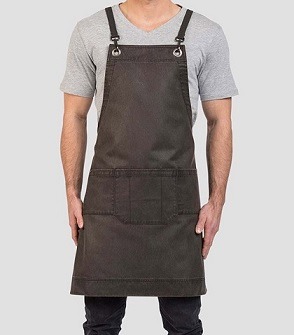
Aprons that are designed for the use of people who work in cafes and kitchens are made of heavy materials that are not only heat and wear resistant, but also easy to launder.
With the modern colours, fabrics and designs that have been developed to be used in making today’s café aprons, they are no longer drab and plain. A modern well fitted apron with a carefully chosen colour can add to the overall appeal and impression customers feel in a café while also making a fashion statement and an important addition to an establishments branding image in a very positive way.
When choosing the right design of apron care should be taken to ensure it is a good fit and suites the conditions that the employees will encounter during their work shift. Some aprons are specially designed to be worn by front end staff where they are constantly dealing with customers and the public. These tend to be made of lighter fabrics and also tend to be of lighter shade or white as this is expected by the customers and portrays a clean and fresh image.
Many establishments especially the larger kitchens find if best to have a variety of aprons available to employees, often the colour of the apron a person wears can depend on the type of work they are doing and the area of the kitchen they are working in. Those chefs and cooks dealing with baked goods and desserts tend to wear white aprons as these do not show flour and other light coloured stains.
When working with meats and vegetables often the head chef or kitchen manager will specify those people should wear a darker coloured apron, often of a dark blue or gray as these colors tend to hide stains from these types of foods.
Those people in the cleanup area of a kitchen often have plasticized aprons as they are dealing around the sinks and dish washing sterilizing areas and have to deal with wet and often hot conditions.
A chef’s uniform is relatively expensive and not so easy to launder especially when stained with the different substances commonly found in kitchens so a good quality apron can save the wearer from a lot of work and expense by keeping it clean.
Many aprons come with heavy duty pockets for keeping tools like tongs and shears that are needed while working around the kitchen and some are also equipped with special pad and pen holders as well as a place to hang a kitchen towel. These added features help to make a professional chefs apron an important and functional part of their uniform.
0 notes
Text
What Are The Qualities Needed To Become A Great Chef?
The famous French Chef Gusteau said “anyone can cook”, but it takes a well motivated and multi talented cook to become a “Great Chef”. For those who wish to become a Great Chef, developing the following qualities would greatly assist their endeavors:
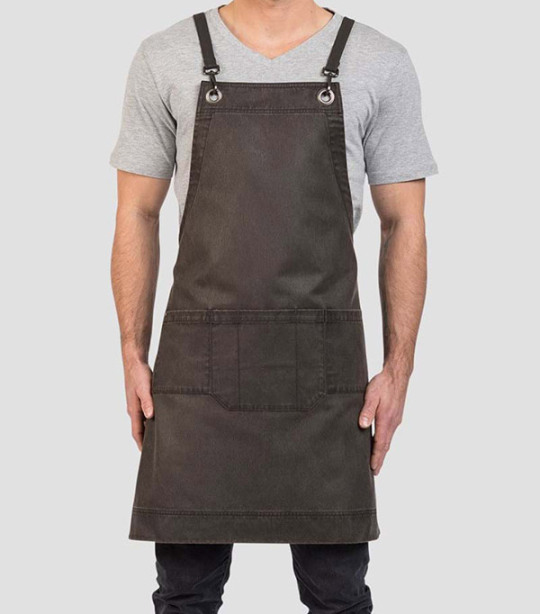
Creativity and imagination
Without a doubt being creative and imaginative are important traits any artist needs, a chef also a unique appreciation of food and tastes. Being a great chef is all about creating new and enticing dishes that will impress and satisfy dinners, about taking risks, doing new things, and being passionate about cooking.
Technical Excellency
Being a chef, you need the best technical skills, but also know how to balance these with the “art of cooking” just like a successful Barista creating the perfect coffee, a chef strives to create the best meals possible.
Teamwork
Every kitchen is made up of a team, from the smallest establishments to the largest commercial caterers, them teamwork is vital. You need to be able to work with and respect everyone in the kitchen from kitchen hands wearing their barista aprons and porters to the Executive Chef.
Your teamwork abilities will be a major factor in determining your success in the culinary world, this is one of your keys to your future as a Great Chef.
Multitasking
Every day in the kitchen there are new challenges from getting your apron dirty doing dishes or taking out the garbage, if there is no one to do the job, the chef steps in to fill any gaps.
The kitchen is a go-go-go area and your responsibility as a chef is keeping things going by delegating jobs or doing them yourself.
The main attribute required is being able to keep a level head and temperament while managing a hundred small jobs at the same time and still keeping all your customers satisfied.
Attention to Detail
Attention to detail is the mark of a Great Chef, your ability to keep things together from your staffs barista aprons to the supplies due tomorrow. You must measure and mix everything to create those masterpieces expected of you every minute. You need to check the front staff’s aprons are clean, notice that missing garnish, taste that sauce and not overcook anything while ensuring everything is on time.
Handle Criticism
No one can ever be perfect, in the high-pressure atmosphere of a busy kitchen, mistakes happen and people are hard to please. Not everyone will like everything you do or cook, so a great chef needs to be tolerant of others and understand that some things will not always go the way they planned or want. Finding alternatives and compromises to problems is the mark of a good chef and kitchen organizer. Criticism should be met gracefully and a good chef should ready, be willing and able to accept any criticism and use it in a positive way to improve themselves and their kitchen.
0 notes
Text
Why Professional Chefs Wear Clogs
Chefs and other people working in food preparation areas typically like to wear the most comfortable and durable footwear they can find. Experience has shown that professional Chef Clogs are usually the best option to choose when a buying your Chef uniform or looking for quality kitchen footwear, they are very comfortable, long lasting and durable.

Most chefs, cooks and kitchen assistants find they often have to work 8 to 12 or sometimes 14 hour shifts, with almost all of this time spent standing or walking around the kitchen. Having safe and comfortable footwear is of paramount importance to all people working in these conditions as sore and tired feet, cramps and blisters can cause the job to become a nightmare and adversely affect your performance.
In a normal shift most chefs will have to deal with wet and slippery areas, the freezing cold or walk in freezers and cool rooms, the heat of ovens and the threat of heavy falling hot or sharp object kitchens, so choosing the right footwear is the main reason why many chefs choose to wear Chef clogs.
Today’s modern professionally designed and made Chef clogs are made from a variety of durable materials designed to withstand the rigors of hard kitchen life, they are water resistant, and multilayer to provide maximum protection, they completely cover the tops of the feet and offer protection from all the hazards likely to be found in modern kitchens.
The traditional clog was all wood with the latest styles being made with wooden soles and synthetic or leather uppers, although these are still available, the more modern types of Chef clogs are made using the latest advances in footwear, safety design from materials such as rubber, plastics, composite synthetics and leather soles and uppers to provide you with the most comfortable footwear possible. For those chefs who work in areas with heavy machinery or there is a danger of heavy objects falling, chef clogs also come with steel toes (steel caps) for additional safety.
Because of their backless design and lack of laces, straps and buckles chef clogs do not pose a potential threat of becoming caught or tangled and are easy to remove quickly by just slipping out your foot in emergency situations such as if hot liquid is spilt or there is oil on the floor.
Chef clogs are designed to provide the wearer with the maximum amount of traction in any hazard; they usually come with anti-skid patterns or grooves on the soles making them very slip resistant in most kitchen situations.
The foot-bed or inner sole of the modern Chef clog incorporates materials that help absorb foot impact and reduce pressure points; they give the wearer a high degree of comfortable arch support as well as heel padding and heel, air bed support.
Although Chef clogs have a somewhat chunky appearance and could not be described as a fashion accessory they provide such a high degree of comfort to chefs in all parts of Australia and New Zealand that they have become a must have part of every successful chef uniform. They are essential for many chefs in this high stress, fast paced industry where proper foot support is needed to allow for the fast movements that are needed in peak service times when rushing to fill orders and get the meals plated on time.
0 notes
Text
Why Chef Hats are Important
Uniforms in many occupations are important for a variety of reasons from making or giving a good impression, suggesting responsibility and producing a sense of unity in the workplace. Chef hats help to signify seniority in a kitchen and creating an air of respectability as well as having practical safety considerations. A chef hat is one of the most easily recognised hats in the world and can be found in kitchens in every country.
The iconic, tall white hat or toque blanche (French for white hat) is much more than just for show, it was first developed in France during the 16th century as a means of keeping the hair out of the food. One story is that one of the French kings got annoyed with his cook because he found a hair in his dinner so had the unfortunate cook beheaded. This started the practice of wearing a hat while working in the kitchen.
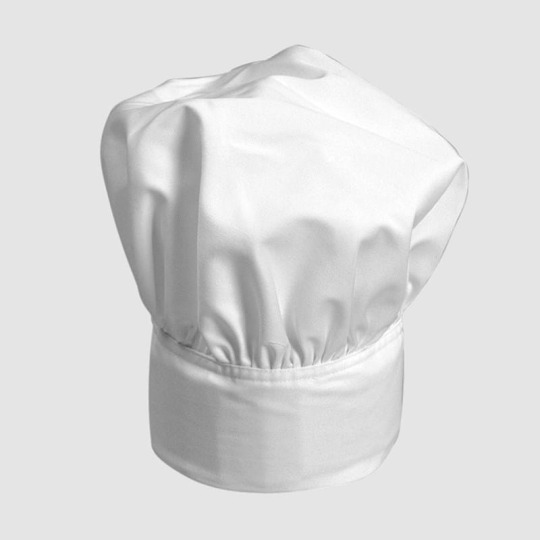
During the 16th and 17th centuries, it was uncommon for men and women to cut their hair this meant that many men had long hair. This often meant that the older the person the longer their hair would become, so with age goes with experience and seniority. The hats became taller to accommodate the longer hair. The older the chef the taller the hat, with the head chef being the oldest and having the tallest hat.
The hat is designed to hold its owners’ hair inside and stop any possibility of any getting in the food or hooked up in or on anything in the kitchen. The pleats or folds in the hat are said to represent the 100 different ways a chef is supposed to know how to prepare and cook an egg.
The traditional chef hat was always white to suggest cleanliness, but modern day kitchens have started to allow different colours to be introduced depending on the owner’s preference. Sometimes the whole chef uniform is coloured to match the branding of a particular establishment.
The local health departments usually require that a suitable hat is to be worn in the kitchen for hygienic reasons, but the exact type is dependent of the choice of the particular kitchen as long as the hair is suitably contained.
The most popular type of chef hat is still the toque blanche, but this white hat can come in a variety of styles for starched cotton to disposable paper hats.
The skull cap is a favorite in many fast food restaurants, especially for people with short hair.
The Mob cap features an elastic opening and is ideal for those with long hair that can be tied back and placed inside the cap with the wearer’s whole hair line covered.
The head scarf is not so common these days, but is ideal for both long and short hair as it can be tied around your forehead and knotted at the back containing all your hair.
The hair net is most often used in industrial food manufacturing and large scale catering kitchens like schools, hospitals and airports where there are many employees. Hair nets are easy to use and work very well to keep your hear in check so are often favored by workers and management where they are out of the public view. They have the advantage they are cheap and can be kept in your pocket.
0 notes
Text
A Check List for Chef Outfit in Kitchen
Most food establishments, whether fast food outlets, fine dining or commercial catering businesses have a preference when it comes to the type and style of chef outfit that they require their employees to wear. So it is advisable to discuss with your employer the head chef or kitchen manager their particular requirements before you purchase your uniform. It was at one time easy to tell the different chefs in a kitchen just by their hats, the most senior chef would always have the tallest hat and hat sizes would reduce in order of rank.
Many modern commercial kitchens have become more flexible with their chef’s outfits in recent years, the well-known “Touge Blanche” (White Top Hat in French) is now not necessarily compulsory for all chefs everywhere.
Each piece the traditional chef outfit serves a specific purpose; every detail from the design to the fabric is not only for show or esthetics but primarily safety and hygiene.
Your checklist of what is needed
Hats
Toque Blanche is the most popular and is designed to keep your hair out of your face and secure as well as allowing a good airflow to keep you cool.
Skullcap is ideal for short hair and reaches down to your ears
The Mob Cap is designed to cover your whole hair line and has an elastic opening to allow all your hair to be placed inside
A Hair Net some establishments and health authorities prefer all employees to wear hair nets as they ensure your hair is under control
Jackets
The traditional Chef Jacket was always white to emphasize cleanliness, but many establishments now chose to break with tradition and use different colors such as black dark blue, grey or colours that match the company branding. The pants are also now available in different colours and patterns instead of the traditional black and white checks.

In a commercial kitchen, there are many hazards from steam to gas flames and hot ovens. A chefs jacket is made of flameproof, double thick cotton, the fabric is designed with safety in mind to protect your body
Neckerchief
A neckerchief or necktie helps protect your skin from dripping perspiration which can be a problem in hot kitchens.
Apron
A good quality apron is a must as it will give added protection and also help keep your uniform clean. Most will have heavy duty pockets to keep your most used kitchen tools in.
Chef Trousers
When you know the colour and style of chef pants used in your kitchen choose ones that are loose and baggy to supports your mobility and provide you with adequate ventilation.
Shoes
It is very important to have footwear that is comfortable and durable, that will protect your feet from possible spills that can be hot and sometimes heavy as well as strong enough provide protection from falling sharp objects. Shoes need to support your feet as it is likely you will be standing in the kitchen for 8 to 12 hours a day.
Knives and Equipment
It is normal for chefs as professionals to have their own basic equipment such as a range of knives and sharpening gear as well as kitchen shears, thongs and carving forks.
When you see someone in a fresh crisp chef uniform it gives a feeling of them being competent and serious about their career. All the necessary high quality Australian made equipment is available from your local catering equipment supplier.
0 notes
Text
Top Reasons to Work in the Hospitality Industry
The hospitality industry covers a very diverse range of jobs with a common theme of helping and looking after people. It involves catering to people, looking after and providing their various wants and needs. Generally, people in this industry are hired for their personal ability to get on with others their cheerful disposition and their individual skills such as a chef, housekeeper, kitchen assistant, waiting staff or such.

Many people in the hospitality industry are extroverted, vibrant, lively and fun people. If you enjoy the idea of a nine to five office job and the same routine the same group of people day in and out day after day, then probably the hospitality industry is not for you.
No matter which level or area you start at in the hospitality industry there is always room for personal improvement and career advancement, this industry opens the doors to endless possibilities and options for many people.
The huge diversity of jobs in the hospitality industry includes restaurant and kitchen work, hosting tours and reception work, economics, sales and marketing, management maintenance and engineering fields. Many of these areas overlap and people find they gravitate naturally to the areas that suit them the most. Some top achievers in the hospitality industry such as managers and heads of departments started their career in the kitchen or the concierge area of hotels and through hard work, ambition opportunity and self-improvement very quickly advanced into the top tier areas.
This wide range of different fields and opportunities is open to all people regardless of their socioeconomic background, who decide to chose the hospitality industry as their career option. Hospitality work is often fun, very dynamic and changeable, it includes the opportunity to change your location and position or advance yourself in other establishments either in your area, different centers or even countries. Hospitality is definitely an energetic vibrant industry so implement a trendy and functional uniform. For the hospitality industry, this means considerations like pockets on aprons for pads and pens, easy tie straps for comfort. A well-designed hospitality uniform is now really an important element of brand building for almost any venue.
A career in Hospitality can literally open the door to the world for you while you gather experience and qualifications which are usually considered universal, allowing you to see the world as a waiter, cook or housekeeper, especially when working within one of the international hotel chains who are renowned for looking after and rewarding their loyal workers.
After all is said and done customer satisfaction means a return customer and that is the backbone of hospitality. Many hospitality workers find that the salaries they receive are reasonable and the tips can be considerable.
So if you are looking for a rewarding career both in the areas of job satisfaction and financial remuneration then the hospitality industry has a lot to offer for many people. Whether a first-time school leaver or seasoned worker, there are rewarding opportunities available in hospitality in virtually every location around the world as everyone needs to eat and sleep. The hospitality industry has proven over the years to be very resilient even in times of economic difficulties as seen in the last decade or so where many industries were hit hard, hospitality has maintained and even prospered.
0 notes
Text
Kitchen Uniforms, Chef Clothing & Hospitality Uniform
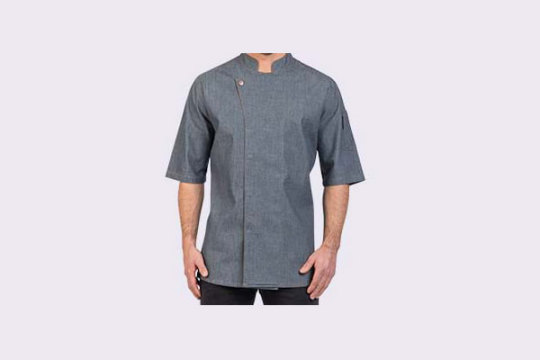
Our multi-faceted product range is designed to cater and appeal to many different needs within today's modern kitchens, cafes and restaurants, with everything from our practical easy care plain fabrics and designs in our Traditional Prochef range right through to some of the most sophisticated fabrics and textures in our more upmarket and contemporary range of Aussie Chef products with their beautiful feel and comfortable fit. To know more visit https://www.aussiechef.com.au/about-us
#Kitchen Uniforms#Chef Clothing#Hospitality uniforms#Hospitality uniforms Australia#Hospitality uniforms Melbourne
0 notes
Text
Things to Avoid In a Chef Interview
You might have just completed your Hospitality Cookery Courses from one of the top cookery courses providers to become a Chef, or you are a working chef and not satisfied with your current employer and looking for a new job. In both the cases, you need to face an interview. Believe me, chef interviews are not much different than other profession interviews, but with the increased competition in the field, you need to be extra conscious. Below we will discuss things that you need to avoid that can improve your chances of getting a Chef Job.

Talk to an expert: Before you even think of submitting your resume to your dream company, that you want to work with, talk to an expert consultant, who can provide you details that you need to take care of, while attending a chef interview, like your outfit, the way you should talk and most important part is your resume and its cover letter, as your resume reflects your expertise, so keep it short, only include relevant information and its cover letter defines your personality, so you can use your resume cover letter to actually stand out from the competition.
Focus on yourself only:
At times people are to stressed about who their opponents are, just focus on yourself, as stressing too much can make you nervous, and this is when you can make mistakes. Better would be to focus on your interview, stay humble and if you sound a genuine candidate to your interviewers, you will be hired for the Job.
Your outfit:
What you wear, speaks a lot about your personality before you even say a word to your interviewers, if you are a working chef it would be hard for you to manage interview schedule, but it is advised not to appear with dirty chef cloths or chef uniform from your workplace. Yes, you can wear chef uniform or a complete chef outfit in the interview if you are asked for a working interview, else best would be to consider wearing formals or a suit.
Don't talk Negative about Your current or Past Employers:
Your current or past employers that you have worked with might have behavioral issues or the working conditions may not suited you or there could be many negative reasons for leaving your job, but if you are asked about your company stay positive with your words, because if you talk negative about your current or past employers, your prospective company will assume that you will negatively about them, also.
Manage your time:
If you are to appear for an interview, better be there in time or even if you reach early best would be to take a walk as reaching early might stress your interviewers, and if due to some reasons you get late or don’t have the time to go for the interview, best would be informing the company, as world is small and during business meets people talk about good and bad employees and interviews both and you would not like to be stamped as Mr. unreliable in the chef world
If you follow the basics of chef interview discussed above, you will gradually and slowly master the art of cracking chef interviews. Remember to be honest recognise your strength and weaknesses. There is always a position for everyone you just need to be there.
0 notes
